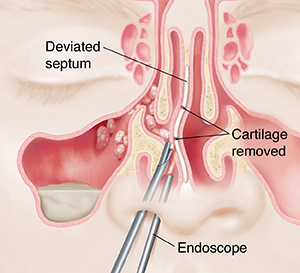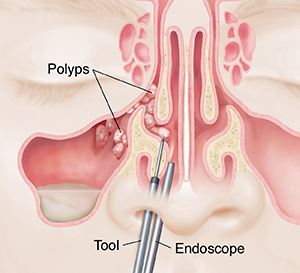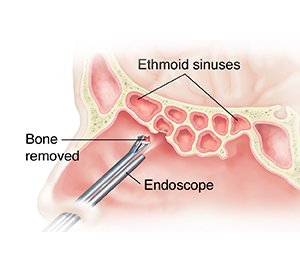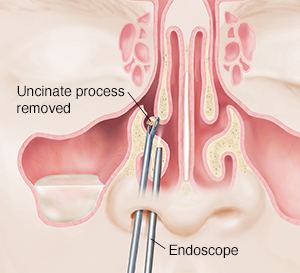Endoscopic Sinus Surgery
The sinuses are hollow areas formed by the bones of the face. Normally, a thin layer of mucus drains from the sinuses into the nose. If the drainage path is blocked, or the mucus discharge becomes too thick or excessive, problems such as infection can result. Endoscopic sinus surgery can be done to help clear blockages. The healthcare provider uses a thin, lighted tube (endoscope) that's put into your nose. The tube lets the provider see and operate inside your nose and sinuses. Endoscopic sinus surgery helps treat conditions such as nasal polyps, sinusitis, and tumors in the nose or sinus.
Straightening the septum
The septum is a piece of cartilage and bone that divides the nasal cavity into two parts (right and left). It runs straight down the inside of the nose. A deviated septum is crooked instead of straight. A crooked septum can cause breathing problems. To fix a deviated septum, the healthcare provider reshapes or trims the cartilage and bone. There's enough septum left for the nose to hold its shape. But the air has more space to move in and out of the nose. This improves your breathing.

Removing polyps
Polyps are small growths. They can grow in both the nose and sinuses. The healthcare provider may use different ways to take them out. Often, the healthcare provider uses special tools to take out the polyps without harming nearby tissues.

Opening the ethmoid sinuses
The ethmoid sinuses are made up of many small air spaces, like a honeycomb. Like the other sinuses, the ethmoids have a lining that makes mucus. In some cases, the drainage path is blocked. The healthcare provider may open the thin walls of bone that separate the air spaces. This makes a passage for mucus to drain more easily.
 |
| Side view. |
Clearing the major outflow pathway of the sinuses
The osteomeatal complex is a term for a major outflow tract of your sinuses. When this part becomes blocked, you may get symptoms in your maxillary, ethmoid, and frontal sinuses. Opening this area is the main step in most sinus surgeries. The uncinate process is a small piece of bone and tissue in the sinuses. It forms an outlet for part of the sinuses. If this tissue is swollen (inflamed), it will block drainage of mucus. The healthcare provider may take out the uncinate process so that mucus can drain.

After the surgery
Your healthcare provider will guide you on how to care for your sinuses after the surgery to minimize any discomfort and keep the sinuses clear. They may prescribe medicines to control pain and prevent infection. You may be asked to use a saline nasal spray or do sinus irrigation. Avoid lifting heavy weights, straining, or blowing the nose for at least 10 days after the procedure or as advised by your healthcare provider.
Call your healthcare provider if you notice any of the following:
-
Fever over 101°F (38.3°C)
-
Heavy or persistent bleeding from the nose that does not go away with decongestant nasal spray
-
Swollen eye or sudden vision changes
-
Severe headache
-
Neck stiffness
-
Severe or persistent diarrhea